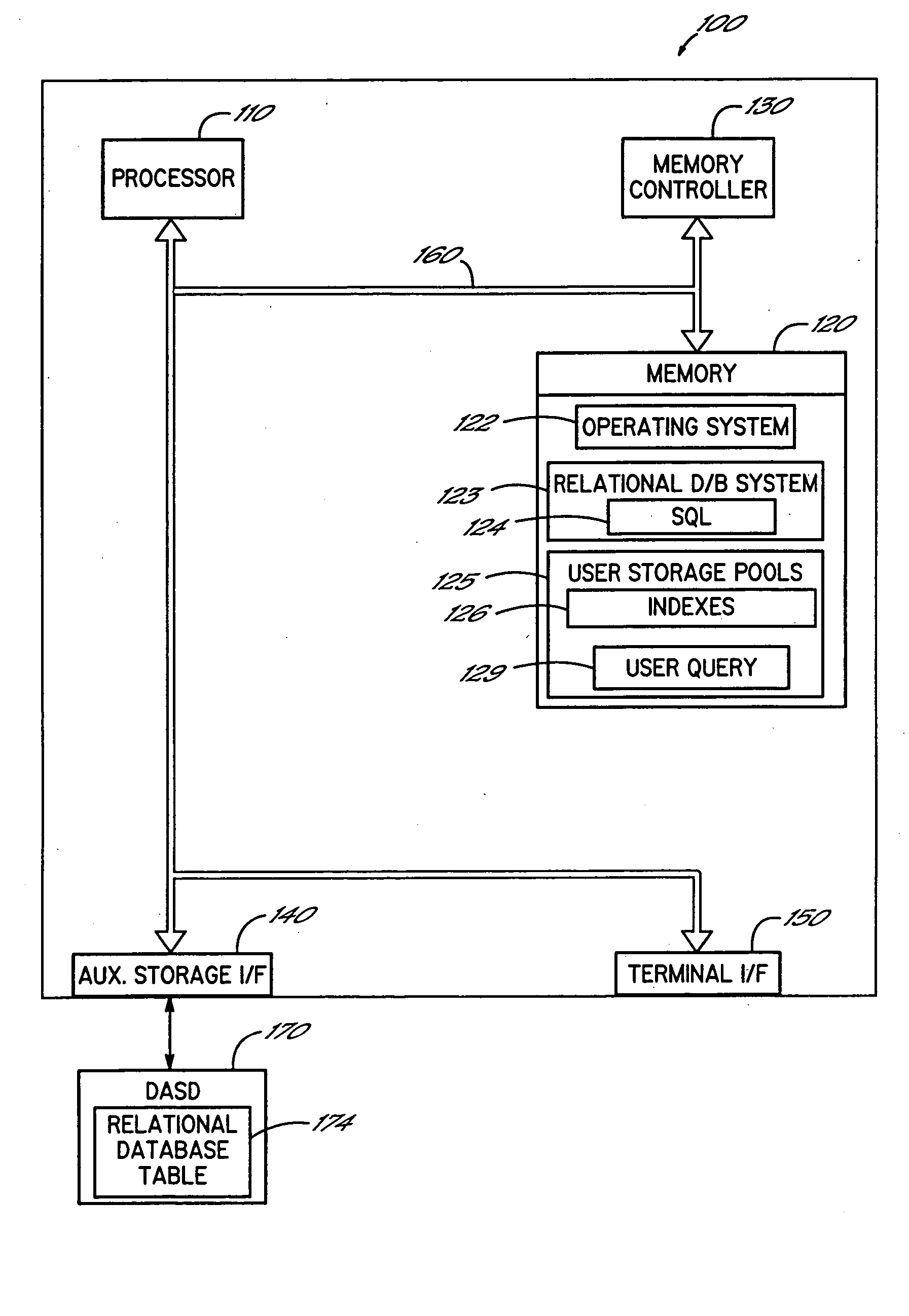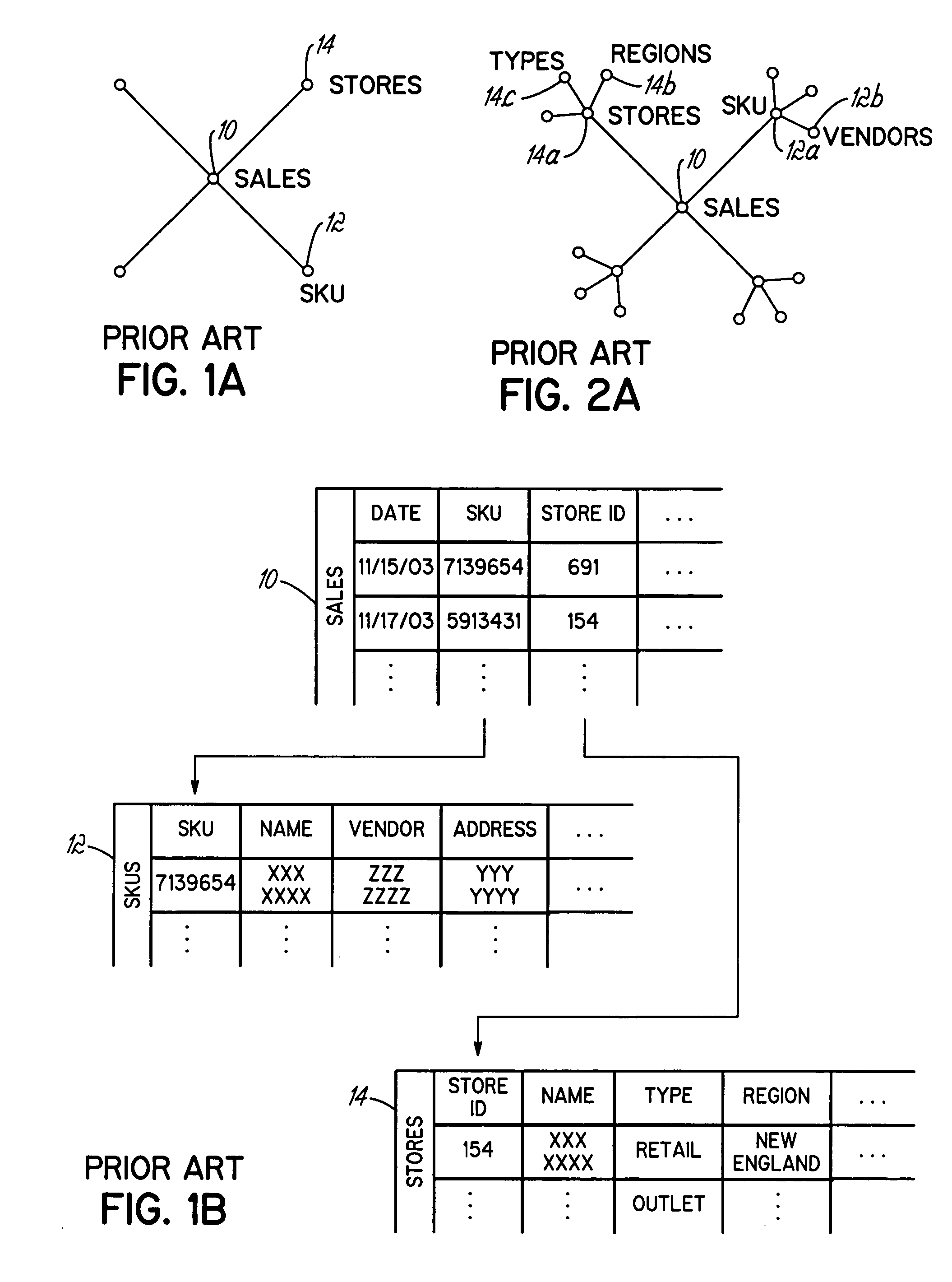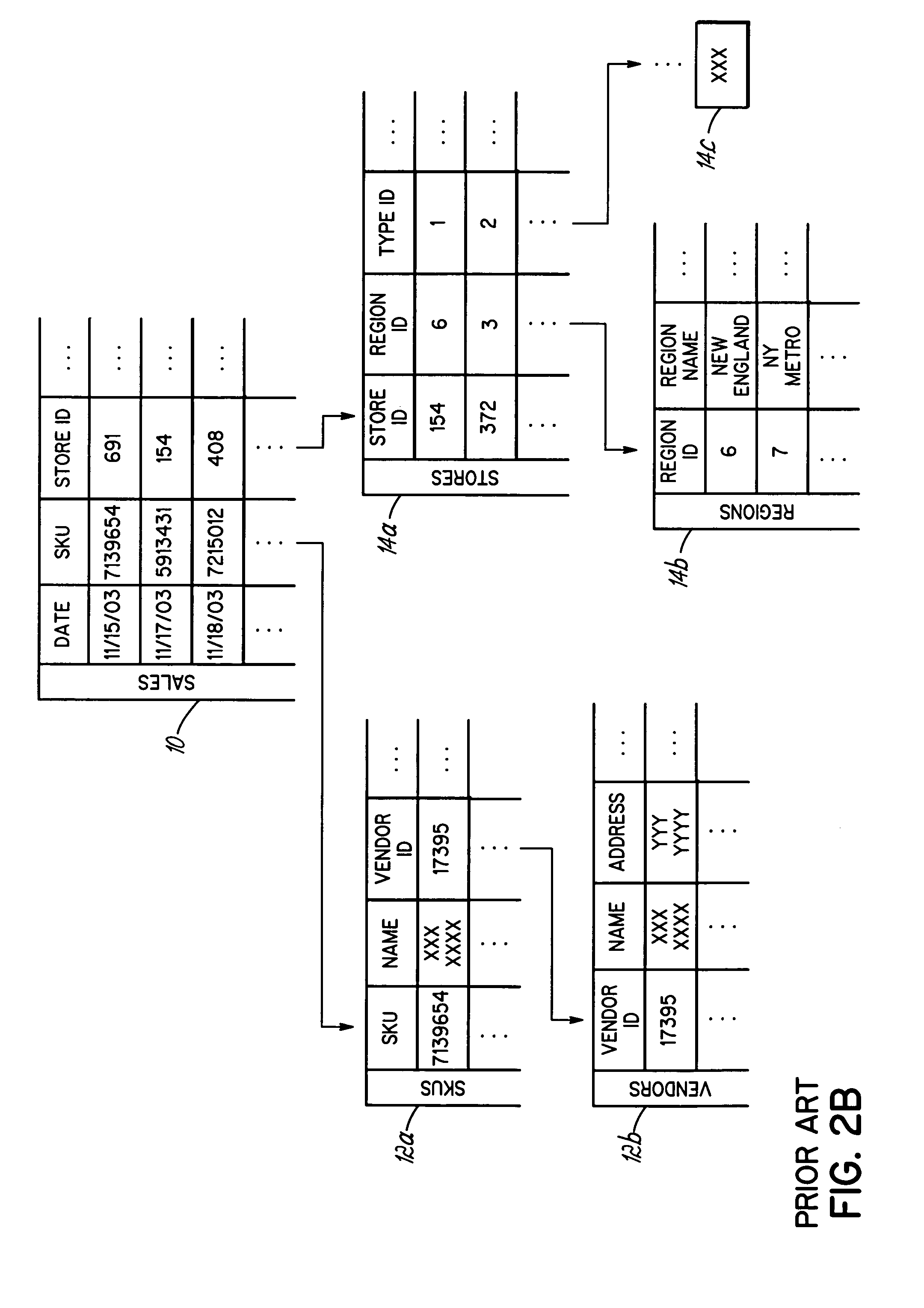Look-ahead predicate generation for join costing and optimization
a predicate and join costing technology, applied in the field of look-ahead predicate generation for join costing and optimization, can solve the problems of inability to reliably identify many known methods, extreme inefficiency of conventional oltp methodology,
- Summary
- Abstract
- Description
- Claims
- Application Information
AI Technical Summary
Benefits of technology
Problems solved by technology
Method used
Image
Examples
Embodiment Construction
[0023] The methods of the present invention employ computer-implemented routines to query information from a database. Referring now to FIG. 3, a block diagram of a computer system which can implement an embodiment of the present invention is shown. The computer system shown in FIG. 3 has a particular configuration; however, those skilled in the art will appreciate that the method and apparatus of the present invention apply equally to any computer system, regardless of whether the computer system is a complicated multi-user computing apparatus or a single user device such as a personal computer or workstation. Thus, computer system 100 can comprise other types of computers such as IBM compatible personal computers running OS / 2 or Microsoft's Windows. Computer system 100 suitably comprises a processor 110, main memory 120, a memory controller 130, an auxiliary storage interface 140, and a terminal interface 150, all of which are interconnected via a system bus 160. Note that various...
PUM
 Login to View More
Login to View More Abstract
Description
Claims
Application Information
 Login to View More
Login to View More - R&D
- Intellectual Property
- Life Sciences
- Materials
- Tech Scout
- Unparalleled Data Quality
- Higher Quality Content
- 60% Fewer Hallucinations
Browse by: Latest US Patents, China's latest patents, Technical Efficacy Thesaurus, Application Domain, Technology Topic, Popular Technical Reports.
© 2025 PatSnap. All rights reserved.Legal|Privacy policy|Modern Slavery Act Transparency Statement|Sitemap|About US| Contact US: help@patsnap.com



